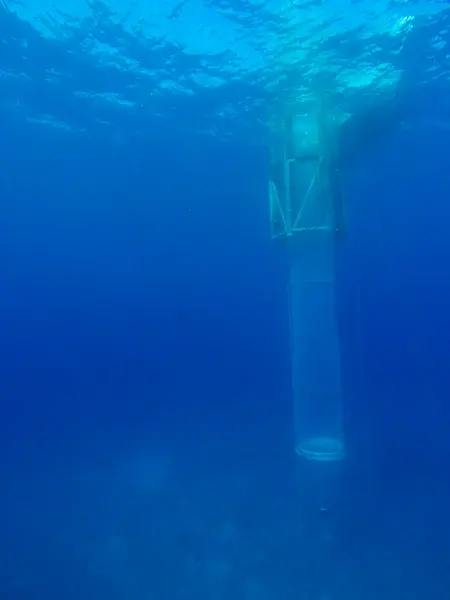
A window into the future ocean
by Michael Sswat, Helmholtz Centre for Ocean Research GEOMAR Kiel, Kiel, Germany
How will ocean acidification, caused by rising atmospheric CO2 concetrations, change plankton community composition? Can artificial upwelling of nutrient-rich deep water into oligotrophic surface waters increase fish production or serve as a carbon sink? A tool to approach these questions among others are pelagic mesocosms. The one shown here is called KOSMOS (Kiel-Offshore-Mesocosm-for-Ocean-Simulations). It consists of a floating frame connected to a “plastic bag”, which can hold a volume of up to 50m³ and is sealed at the bottom with a conical sediment trap, ensuring no water exchange from inside the mesocosms with the outside ocean. The plastic foil is still allowing for heat exchange with the surrounding water and natural light intensities. The enclosed community can than be manipulated depending on the research question, for example with different concentrations of carbon dioxide and nutrients. The maximum duration of such an experiment so far was 113 days, performed in the Gullmarsfjord, Sweden in 2013. The picture was taken in Gando Bay, Gran Canaria in 2014, where we studied the effect of ocean acidification on plankton communities in oligotrophic waters.
Category
Location
- Oceans & Seas (135)
- Atlantic Ocean (28)
- Exact location (-15.3689 W, 27.9189 N)
Colours
Image properties
3000 × 4000 px;
image/jpeg; 4.2 MB
Camera:
Gopro HERO3+ Black Edition
Software: Adobe Lightroom
Taken on 17
October
2014
Submitted on 14 February 2018
Licence
Creative Commons Attribution 3.0 Unported (CC BY 3.0)
Credit
Michael Sswat (distributed via imaggeo.egu.eu)
Share
Appreciate
Report